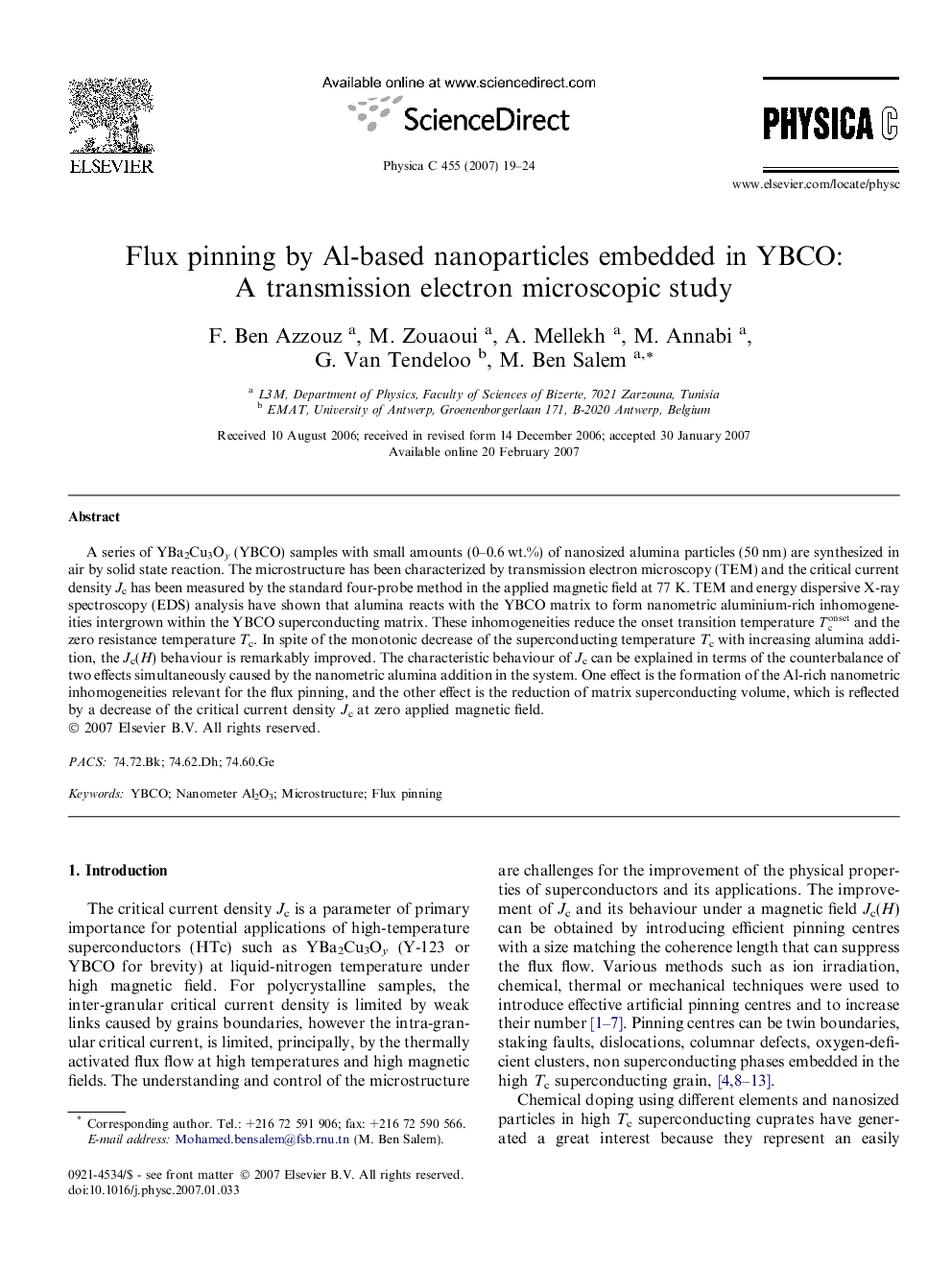| Article ID | Journal | Published Year | Pages | File Type |
|---|---|---|---|---|
| 1820800 | Physica C: Superconductivity and its Applications | 2007 | 6 Pages |
A series of YBa2Cu3Oy (YBCO) samples with small amounts (0–0.6 wt.%) of nanosized alumina particles (50 nm) are synthesized in air by solid state reaction. The microstructure has been characterized by transmission electron microscopy (TEM) and the critical current density Jc has been measured by the standard four-probe method in the applied magnetic field at 77 K. TEM and energy dispersive X-ray spectroscopy (EDS) analysis have shown that alumina reacts with the YBCO matrix to form nanometric aluminium-rich inhomogeneities intergrown within the YBCO superconducting matrix. These inhomogeneities reduce the onset transition temperature Tconset and the zero resistance temperature Tc. In spite of the monotonic decrease of the superconducting temperature Tc with increasing alumina addition, the Jc(H) behaviour is remarkably improved. The characteristic behaviour of Jc can be explained in terms of the counterbalance of two effects simultaneously caused by the nanometric alumina addition in the system. One effect is the formation of the Al-rich nanometric inhomogeneities relevant for the flux pinning, and the other effect is the reduction of matrix superconducting volume, which is reflected by a decrease of the critical current density Jc at zero applied magnetic field.
